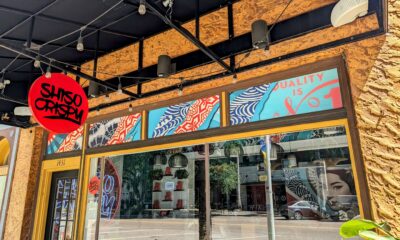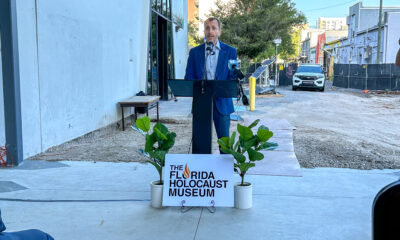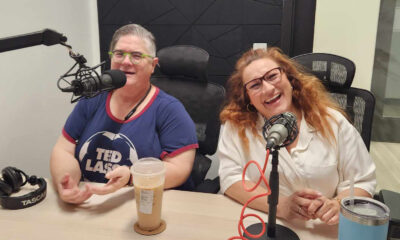Create
Where were you when the curtain fell? Arts leaders reflect on one year under Covid
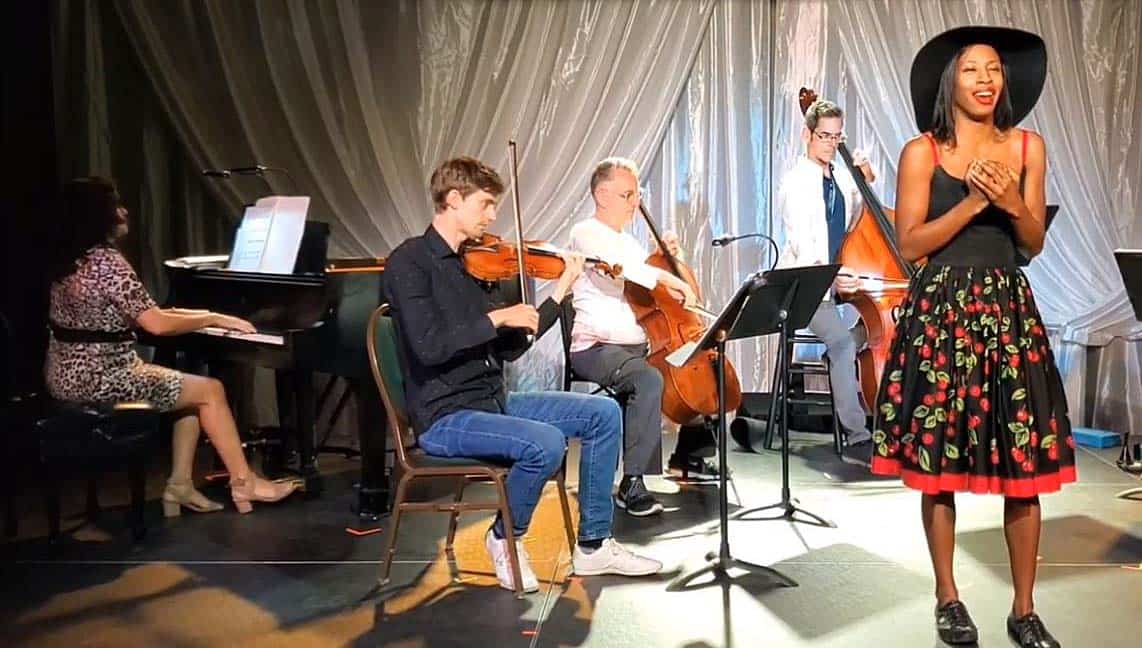
For arts organizations, producers, performers, artists and aficionados alike, Friday the 13th of March, 2020, was particularly jinxed.
While the coronavirus had been spreading like wildfire across America, it wasn’t until this very week, one year ago, that the word pandemic entered our common vernacular, when the World Health Organization and the Centers for Disease Control declared Covid-19 an extreme and immediate threat to public health, followed by state and local government mandating the immediate closure of public gathering places. Business were shuttered and everybody went indoors, into a lockdown of their own choosing. Masks and social distancing came later.
Weekends are particularly important for the performing arts – that’s when new shows open, and when concerts attract the largest crowds. For the visual arts, Fridays and Saturdays mean opening receptions and visits from the new and the curious.
To commemorate the anniversary of the weekend when everything changed, we asked arts leaders from both sides of Tampa Bay where they were, what they were doing and how it felt when the curtain came down.
Part 1 of 2.
 David M. Jenkins/Artistic Director, Jobsite Theater: What was shaping up as our most successful year, ever after crushing all company and venue records with a six-week run of A Midsummer’s Night Dream, was dashed after cancelling Doubt on our opening night (March 13). Roxanne Fay and I were notified by the Straz Center that the building was shutting down via text as we waited in the wings of a local TV station mere seconds from going on-air to talk up the show. After a few weeks, when it became clear this wasn’t going to be a simple four-to-eight week “pause,” Jobsite and the Straz began working together on what re-opening would look like.
David M. Jenkins/Artistic Director, Jobsite Theater: What was shaping up as our most successful year, ever after crushing all company and venue records with a six-week run of A Midsummer’s Night Dream, was dashed after cancelling Doubt on our opening night (March 13). Roxanne Fay and I were notified by the Straz Center that the building was shutting down via text as we waited in the wings of a local TV station mere seconds from going on-air to talk up the show. After a few weeks, when it became clear this wasn’t going to be a simple four-to-eight week “pause,” Jobsite and the Straz began working together on what re-opening would look like.
We finally got there in October, with outdoor performances on the Riverwalk Stage, then small shows indoors before starting our mainstage season back up in January – clearly with a lot of new protocols in place. We’ve also taken this time to look at our internal systems, make some changes in how we do things, and asked a lot of questions about who we are and want to be. One thing is certain – digital products are simply not it. We will continue to do what we can to keep people connected until this is all over, but it is clear people do not value digital work, and so we would rather focus our time and resources on the live experience.
 Mark Sforzini/Executive and artistic director, St. Petersburg Opera Company: We’d had the dress rehearsal for our Creative Collaborations, which was supposed to play that Friday and Saturday night. If I remember correctly, in a very short period of time Broadway shut down, some sports teams were shutting down, and other local arts organizations were canceling their performances. Based on the CDC recommendations, it seemed like the safe and responsible thing to do to protect people to cancel the shows. So that’s what we did.
Mark Sforzini/Executive and artistic director, St. Petersburg Opera Company: We’d had the dress rehearsal for our Creative Collaborations, which was supposed to play that Friday and Saturday night. If I remember correctly, in a very short period of time Broadway shut down, some sports teams were shutting down, and other local arts organizations were canceling their performances. Based on the CDC recommendations, it seemed like the safe and responsible thing to do to protect people to cancel the shows. So that’s what we did.
I did Facebook Live shows to preview showing some of our past operas. We were all just shut away for two months, it seemed like; it was hard to create anything new. Then we launched the virtual Artist Recital Series, with eight singers from around the country. And then we started the outdoor operas in August. That seemed the way to go, like super-safe.
We’ve been doing those outdoor shows since then, adding more and more production value every month, as we work our way back to doing regular opera at the theater. I think doing opera outdoors is a great way to reach new audiences. So it’s something we can keep that we hadn’t considered doing before.
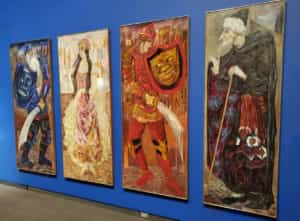
“Art of the Stage” at the Museum of Fine Arts St. Petersburg. Photo by Bill DeYoung
 Kristen A. Shepherd/Executive Director, Museum of Fine Arts St. Petersburg: By early March 2020 it was clear that Covid-19 was going to be a serious public health crisis. What we did not know as we planned our safety measures, and eventually our closure, was that it would last for a year or more. The Museum of Fine Arts was in the middle of another very popular exhibition, Art of the Stage: Picasso to Hockney, and we had a full calendar of programs and performances to complement a gorgeously-designed show. In addition to being a stellar art exhibition, Art of the Stage offered us the opportunity to collaborate with regional and national performing arts orgs to activate the entire museum with performance. Our partners ranged from The Florida Orchestra to the Sarasota Ballet and the Sphinx Virtuosi and many more. Sphinx had just finished its residency, which included performances in various locations and workshops with students of color in schools all over St. Petersburg.
Kristen A. Shepherd/Executive Director, Museum of Fine Arts St. Petersburg: By early March 2020 it was clear that Covid-19 was going to be a serious public health crisis. What we did not know as we planned our safety measures, and eventually our closure, was that it would last for a year or more. The Museum of Fine Arts was in the middle of another very popular exhibition, Art of the Stage: Picasso to Hockney, and we had a full calendar of programs and performances to complement a gorgeously-designed show. In addition to being a stellar art exhibition, Art of the Stage offered us the opportunity to collaborate with regional and national performing arts orgs to activate the entire museum with performance. Our partners ranged from The Florida Orchestra to the Sarasota Ballet and the Sphinx Virtuosi and many more. Sphinx had just finished its residency, which included performances in various locations and workshops with students of color in schools all over St. Petersburg.
We were the first museum to close in our community, and within a week or two all the others closed as well. We certainly didn’t waste the time! We moved quickly on a planned renovation of our galleries, completely reimagining the presentation of our storied collection. When we reopened, our members and visitors were floored. That felt great. Our curatorial team also wrote a new handbook of the collection which is being published by Rizzoli, and it will be available later this fall. We moved a lot of programs online and that has been incredibly successful. I expect we will keep those going even after more in-person programs are possible.
We learned a lot during this past year, and while we are looking forward to Covid receding and having our fully vaccinated community return to the museum without fear of illness – we also want to celebrate the positive things that have come from this strange time as well.
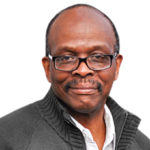 Bob Devin Jones/Founder, artistic director, thestudio@620: We were actually waiting to exhale. We had one last program, with a man who is the son of a Tuskegee Airman. We were planning a lecture/demonstration with him. We went ahead with it, and that was it until October-ish.
Bob Devin Jones/Founder, artistic director, thestudio@620: We were actually waiting to exhale. We had one last program, with a man who is the son of a Tuskegee Airman. We were planning a lecture/demonstration with him. We went ahead with it, and that was it until October-ish.
This out-Stephen Kinged Stephen King. If you’ve seen The Thing, there’s a climax, but then there’s a denouement, and then the damn thing’s over. This has been like nonstop erotic café. The denouement, for me, was that memorial that Biden did. Before we’re MAGA or RepubliCANs and DemocratiCANs and LibertariANs, we’re huMANs. And we needed a pause. My fever broke the day before the inauguration where they had that memorial service. We need something more than being an elephant stuck in a zoo, pacing back and forth.
We’ve found a way to have a limited amount of people to come into the Studio for the art openings. We’ve done a couple of Zoom things, but I’m not going to keep doing the Zoom conversation thing. I don’t like it. I’ve become Charlie Rose. He would often not be listening to what someone was saying – he was checking his notes rather than engaging. Like a real conversation.
Funny enough, I’m going to start a podcast May 1, called R&B. A public affairs arts program twice a month, talking about what’s good.
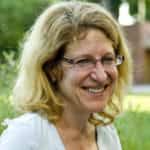 Barbara St. Clair/Executive director, Creative Pinellas: So where were we? We were about to have our grand opening of the SPACEcraft public art project that had been over a year in the making. The repurposed shipping containers had been delivered to Oldsmar, and brightly painted. A month-long plan for interactive arts activities had been planned and publicized, along with the next locations that the project would go to. The SPACEcraft team had been onsite for days, getting ready, getting ready, doing a dry run and talking to community members who had seen the containers from the street. On Saturday, March 14 we were going to make it official. We were bringing in a radio station for a live radio remote, we had performing artists scheduled and an agenda with speeches from County Commissioners and Oldsmar government and civic leaders as well as Creative Pinellas. On Thursday, March 12 we talked with Oldsmar city officials. We were still on. On Friday, March 13 (yes, I know) I sat with John Collins from the St. Pete Arts Alliance, in the Café at the MFA. We were the only customers there. Later that afternoon, we learned the Grand Prix had been cancelled. And just a few minutes before 5 p.m, or maybe a few minutes after, we got a call from our Oldsmar contact. The grand opening was off, and in fact the SPACEcraft project was shut down until further notice.
Barbara St. Clair/Executive director, Creative Pinellas: So where were we? We were about to have our grand opening of the SPACEcraft public art project that had been over a year in the making. The repurposed shipping containers had been delivered to Oldsmar, and brightly painted. A month-long plan for interactive arts activities had been planned and publicized, along with the next locations that the project would go to. The SPACEcraft team had been onsite for days, getting ready, getting ready, doing a dry run and talking to community members who had seen the containers from the street. On Saturday, March 14 we were going to make it official. We were bringing in a radio station for a live radio remote, we had performing artists scheduled and an agenda with speeches from County Commissioners and Oldsmar government and civic leaders as well as Creative Pinellas. On Thursday, March 12 we talked with Oldsmar city officials. We were still on. On Friday, March 13 (yes, I know) I sat with John Collins from the St. Pete Arts Alliance, in the Café at the MFA. We were the only customers there. Later that afternoon, we learned the Grand Prix had been cancelled. And just a few minutes before 5 p.m, or maybe a few minutes after, we got a call from our Oldsmar contact. The grand opening was off, and in fact the SPACEcraft project was shut down until further notice.
We decided pretty quickly that if people couldn’t go out to experience art in Pinellas County, we needed to provide online opportunities. We launched what we called our “Arts In” portal, by the end of April. We also made a decision to pay the artists who submitted an honorarium so that it could be a source of income for them as well. Sheila Cowley, the managing editor of the Arts Coast Journal, started publishing content about where to go online to experience the arts, nationwide, because we really felt like we had to provide as many resources as we could for our community. That same drive is what brought us together with the Pinellas Community Foundation and the St. Petersburg Arts Alliance, and then the Foundation for a Healthy St. Petersburg, to launch the Arts Community Relief Fund. We raised and distributed about $140,000 in April and May.
From the vantage point of today, I am amazed at the resiliency and creativity of this community. How many of us are still here. How many of us have found ways to survive and to thrive. I am also thankful for all of the government, business and civic leaders, and arts supporters who recognized the breadth and depth of the devastation that Covid was capable of (and was) creating and who understood the value of the arts and the arts community, and found ways to include the arts in their programs and support.
 Carrie Jadus/Artist: One year ago, I underestimated how Covid-19 would affect my business and my creativity. My initial feeling was that as more became known about the virus, it would be contained and all this would end. As summer approached and it became clear that an end was not in sight, I became suspended in a limbo where staving off fear was a part of functioning. That feeling reminds me of an experience I had a child where the “unknown” becomes almost all-consuming.
Carrie Jadus/Artist: One year ago, I underestimated how Covid-19 would affect my business and my creativity. My initial feeling was that as more became known about the virus, it would be contained and all this would end. As summer approached and it became clear that an end was not in sight, I became suspended in a limbo where staving off fear was a part of functioning. That feeling reminds me of an experience I had a child where the “unknown” becomes almost all-consuming.
When I was a little girl, my parents would take us camping in Ocala where we loved to swim the springs. The springs there are crystal clear, but there are patches of a sea grass that float around in some areas. Once I saw some other kids swimming in an area on the other shoreline about 60 yards away and decided to swim over to them. On the way, I approached a patch of sea grass floating just below the surface. I normally avoided the sea grass, but I couldn’t see how long the patch spanned. I swam quickly into it expecting to make my way through the other side any moment. I then found myself entangled in a much bigger patch of sea grass and dismissed my fears and kept swimming. I started to feel gross bugs and snails and imagined all the weird little fish and even eels that could be all around as I continued on. This was way worse than I had imagined and I had no idea at this point where it would end. I could see people in the distance swimming in the open part of the springs and I knew that if I just kept swimming I would eventually get there. I started praying because I remembered seeing alligators hanging out in large areas of grass.
Eventually, after what seemed like forever, I could feel that the sea grass was starting to thin. My fear started to subside and a sense of relief and hope emerged. A frightening experience that I survived had been added to my life.
This is how I feel about the 2020 Covid year.
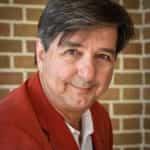 Paul Wilborn/Executive Director, Palladium Theater: Going into March of 2020, the Palladium was firing on all cylinders. We had three more shows in our chamber music season, two more in our cabaret series, our Beacon dance concert was rehearsing, and our Side Door schedule was full. St. Petersburg Opera had two more productions booked, May was filled with dance recitals. The Florida Orchestra was doing another Inside The Music concert. Looking out to the end of our fiscal year on June 30, we had only six days that were not under contract.
Paul Wilborn/Executive Director, Palladium Theater: Going into March of 2020, the Palladium was firing on all cylinders. We had three more shows in our chamber music season, two more in our cabaret series, our Beacon dance concert was rehearsing, and our Side Door schedule was full. St. Petersburg Opera had two more productions booked, May was filled with dance recitals. The Florida Orchestra was doing another Inside The Music concert. Looking out to the end of our fiscal year on June 30, we had only six days that were not under contract.
We lost all that business and have only produced a handful of live shows in a year. I’m most proud of the fact that we were able to keep all our full-time staff on the payroll. After the initial shock of the shutdown, we moved into video production, buying cameras and lenses and training our tech crew to do video. We are now in the streaming business. We commissioned a major study of the acoustics, lighting and other aspects of Hough Hall. We changed our box office software and developed a new website. We launched the Palladium Creative Class of 2021, putting real money into the pockets of 11 top artists. None of it made up for the lost business, but we will emerge a stronger and more resilient organization in the coming months. Look for live shows starting in May and June.

“Lone Star Spirits.” Photo: Suzanna Mars.
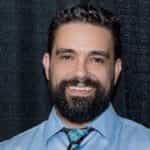 Eric Davis/Artistic Director, freeFall Theatre: The week of March 9, 2020 our staff was in constant communication about what it would mean for us to have to shut down because of Covid-19. We didn’t know how fast things would change on March 11 when the WHO declared the coronavirus a worldwide pandemic. We were in the middle of a successful run of Lone Star Spirits, and like so many theatres across the country, our Sunday matinee on the 15th would be our last performance in our indoor space that year. We still had two weeks left in the run, and we were all set to begin rehearsals for Jerry Herman’s Dear World. The remainder of Lone Star Spirits was cancelled, and ultimately Dear World and the world premiere of Oz were both postponed indefinitely.
Eric Davis/Artistic Director, freeFall Theatre: The week of March 9, 2020 our staff was in constant communication about what it would mean for us to have to shut down because of Covid-19. We didn’t know how fast things would change on March 11 when the WHO declared the coronavirus a worldwide pandemic. We were in the middle of a successful run of Lone Star Spirits, and like so many theatres across the country, our Sunday matinee on the 15th would be our last performance in our indoor space that year. We still had two weeks left in the run, and we were all set to begin rehearsals for Jerry Herman’s Dear World. The remainder of Lone Star Spirits was cancelled, and ultimately Dear World and the world premiere of Oz were both postponed indefinitely.
We never would have imagined a year ago (when we initially believed we would be shuttered for eight weeks) that a year later we would still not be performing in our beloved studio space. Nevertheless, through the ingenuity of our staff, crew, and artists, we have been able to leverage our large parking area into a means of returning to live performance in a very safe way, with our drive-in concerts. Finding a way for audiences to experience a live concert without having to leave their own vehicle has been a game-changer for us.
As we look ahead, regardless of when we are able to return to our indoor space, by the end of summer we will have completed a season of five productions in the time we normally would have done six. Along with the two complete productions we lost last season, when all is said and done, we will have lost about six months of programming. That still presents immense challenges and has set back many of the other parts of our mission that we are currently unable to fulfill. Still, we are so grateful that we have been able to provide a safe escape for the community, create jobs for artists, and honor the confidence of our donors and audiences.
We are so grateful for so much at freeFall. The support of our donors, patrons and board; the agility of our organization; and our wonderfully versatile campus have really been our saving graces through this incredibly challenging period.
 Hank Hine/Executive Director, the Dali Museum: One year ago, we were entering our peak season, welcoming guests from around the world to see our unparalleled collection of Salvador Dali works. Our special exhibition, Midnight in Paris: Surrealism at the Crossroads, 1929, organized with The Centre Pompidou in Paris, was a multi-sensory walk-through of the artistic milieu of Paris. We were hosting student field trips and docent-led group tours, while sharing lectures, film and literature through our community programs, and we were just weeks away from hosting hundreds of guests for our annual Spring fundraiser, Los Vinos de Dali.
Hank Hine/Executive Director, the Dali Museum: One year ago, we were entering our peak season, welcoming guests from around the world to see our unparalleled collection of Salvador Dali works. Our special exhibition, Midnight in Paris: Surrealism at the Crossroads, 1929, organized with The Centre Pompidou in Paris, was a multi-sensory walk-through of the artistic milieu of Paris. We were hosting student field trips and docent-led group tours, while sharing lectures, film and literature through our community programs, and we were just weeks away from hosting hundreds of guests for our annual Spring fundraiser, Los Vinos de Dali.
When the pandemic hit, we closed our physical doors for 100 days and quickly pivoted to open a new virtual world. If what we see on a screen could ever substitute for art seen in person, we went as far as it is possible to go by shifting our exhibits, educational activities and programs online. We worked diligently to re-open the museum on July 1 by transforming our daily operations and creating detailed plans focused on the health and safety of our visitors, members, volunteers and staff. Additionally, we adjusted our exhibition schedules including curating new exhibits from our collection and creating live virtual programs to engage our audience.
Following our reopening, we unveiled a stellar new show – signed on before the pandemic hit – Van Gogh Alive, where visitors can feel the sensation of walking through Vincent Van Gogh’s paintings. The local community has responded profoundly – we are drawing twice the amount of regional visitors and collectively our visitation is currently largely from Florida. We are carefully maintaining physical distancing measures by limiting capacity to around 25% of normal and virtually all of our programming continues to be online.
We know the effects of the pandemic will continue. We are incredibly grateful for the support we’ve received and look forward to once again welcoming visitors from around the globe.
Read Part 2 here


